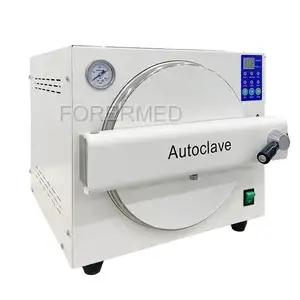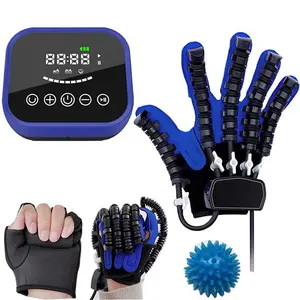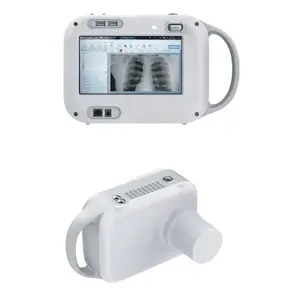Phổ biến trong ngành của bạn






Tầm Nhìn Ban Đêm Goggle Quad Quang Học Đầu Gắn Siêu Nhẹ Gpnvg 18 Với Gen2 + Hình Ảnh Khuếch Đại Ống
279.753.311 ₫ - 307.731.186 ₫
Đơn hàng tối thiểu: 5 Cái






Blunith tầm nhìn ban đêm săn bắn bắn Red Dot phạm vi đốm nhiệt
35.608.204 ₫ - 66.129.522 ₫
Đơn hàng tối thiểu: 5 Cái
Vận chuyển mỗi chiếc: 250.275 ₫







Dụng cụ quang học esebio kính hiển vi sinh học một mắt để thử nghiệm trong phòng thí nghiệm
1.983.886 ₫ - 2.161.927 ₫
Đơn hàng tối thiểu: 1 Bộ
Vận chuyển mỗi chiếc: 1.205.084 ₫






Blunith hồng ngoại lrf uncooled VOX chụp chiến thuật Nhiệt hình ảnh phạm vi cho săn bắn nhiệt tầm nhìn ban đêm
35.608.204 ₫
Đơn hàng tối thiểu: 50 Cái
Vận chuyển mỗi chiếc: 145.994 ₫







Tầm nhìn ban đêm bằng một mắt pvs14 với màu xanh lá cây phosphor hình ảnh intensifier Ống pvs14
45.756.543 ₫ - 50.843.429 ₫
Đơn hàng tối thiểu: 5 Cái






Deepsound zto: Bộ chuyển đổi đầu dò siêu âm mở rộng phạm vi kiểm tra với nhiều loại đầu dò, kiểm tra siêu âm
20.347.546 ₫ - 24.162.710 ₫
Đơn hàng tối thiểu: 1 Cái






Cao rõ ràng Ống nhòm tầm xa 7x40 Kính thiên văn Olympus kính hiển vi cx23 thị kính lớn để cắm trại phạm vi nhiệt để săn bắn
Sẵn sàng vận chuyển
2.746.919 ₫ - 3.611.690 ₫
Đơn hàng tối thiểu: 5 Cái
Vận chuyển mỗi chiếc: 981.515 ₫






Máy Nội Soi Cắt Bỏ Cột Sống 6.3Mm/6.6Mm/6.9Mm Phụ Kiện Nội Soi Cứng
20.347.546 ₫ - 38.151.648 ₫
Đơn hàng tối thiểu: 1 Cái






Y tế tiết niệu nội soi cystoscope dụng cụ 30 độ worf stryker Olympus storz urethroscope
47.943.904 ₫ - 55.955.750 ₫
Đơn hàng tối thiểu: 1 Đơn vị
Vận chuyển mỗi chiếc: 635.861 ₫






26fr lưỡng cực làm việc yếu tố hoạt động/thụ động resectoscope turp thiết lập với 4 mét phạm vi
12.208.528 ₫ - 57.990.504 ₫
Đơn hàng tối thiểu: 1 Cái






Dùng một lần storz phụ khoa cứng nhắc shenda 2.9 nhỏ gọn phẫu thuật olympus 0 độ văn phòng trophy phạm vi hysteroscope
47.943.904 ₫ - 55.955.750 ₫
Đơn hàng tối thiểu: 1 Đơn vị
Vận chuyển mỗi chiếc: 635.861 ₫






Camjoy 10mm 6.9mm 6.3mm 30/15 độ transforaminal nội soi interlaminar phương pháp tiếp cận dilator interlaminar nội soi phạm vi
20.347.546 ₫ - 96.650.840 ₫
Đơn hàng tối thiểu: 1 Cái






Olympus Ống Soi Nội Soi Cứng HD Ống Soi Thanh Quản Ống Soi Nội Soi Thanh Quản Với Chất Lượng Hàng Đầu
4.578.198 ₫ - 12.208.528 ₫
Đơn hàng tối thiểu: 1 Cái






FG Chất Lượng Cao Thép Không Gỉ Phạm Vi Big Phạm Vi Made Up Tại Trung Quốc Với Gỗ Xử Lý Và Đo Bar
119.542 ₫ - 143.451 ₫
Đơn hàng tối thiểu: 1 Đơn vị






Ikeda percutaneous transforaminal nội soi cột sống chỉnh hình kênh lớn phạm vi
94.081.962 ₫ - 101.712.292 ₫
Đơn hàng tối thiểu: 1 Bộ






Ống Ngắm & Phụ Kiện Bộ Chuyển Đổi Máy Ảnh Kính Viễn Vọng Vòng Chữ T + 1.25 "Bộ Chuyển Đổi Gắn Kính Viễn Vọng + Ống Nối Dài Cho Canon EOS DSLR
114.455 ₫ - 152.607 ₫
Đơn hàng tối thiểu: 2 Cái


Đồng thau rắn thu nhỏ chức năng đóng mở kính thiên văn Keychain spyglass phạm vi.
101.738 ₫ - 127.173 ₫
Đơn hàng tối thiểu: 12 Hộp




Ống Bọc Vớ Chiến Thuật Ống Bọc Phụ Kiện Bảo Vệ Silicon Co Giãn Được Xử Lý Rộng 16 Inch
Sẵn sàng vận chuyển
30.522 ₫ - 38.152 ₫
Đơn hàng tối thiểu: 10 Cái
Vận chuyển mỗi chiếc: 50.106 ₫






Săn bắn phản xạ Sight năng lượng mặt trời hệ thống điện săn bắn SRS 1x38 Red Dot Sight phạm vi với QD Mount Optics phạm vi
Sẵn sàng vận chuyển
813.902 ₫ - 979.226 ₫
Đơn hàng tối thiểu: 2 Cái
Vận chuyển mỗi chiếc: 609.664 ₫






Siêu độ nét cao phạm vi yubeen MC4-16X44 SF chiếu sáng nhỏ gọn săn bắn Sight phạm vi phạm vi quang học
Sẵn sàng vận chuyển
1.095.716 ₫ - 1.332.256 ₫
Đơn hàng tối thiểu: 20 Cái
Vận chuyển mỗi chiếc: 634.590 ₫






Săn bắn phản xạ Sight năng lượng mặt trời hệ thống điện săn bắn SRS 1x38 Red Dot Sight phạm vi với QD Mount Optics phạm vi
Sẵn sàng vận chuyển
801.185 ₫ - 966.509 ₫
Đơn hàng tối thiểu: 2 Cái
Vận chuyển mỗi chiếc: 1.907.583 ₫






Bán Buôn Bệnh Viện Nội Soi Xe Đẩy Cho Olympus Dedices
9.665.084 ₫ - 10.173.773 ₫
Đơn hàng tối thiểu: 2 Cái






Ov9734 Máy Ảnh Nội Soi Nguồn Sáng Ống Máy Ảnh Kiểm Tra Với Counter Meter Olympus Nội Soi
1.259.005 ₫ - 2.428.989 ₫
Đơn hàng tối thiểu: 5 Cái




Phóng to Kính thiên văn cổ hải lý Đồng phạm vi Hàng Hải với hộp gỗ món quà Giáng sinh.
127.173 ₫ - 152.607 ₫
Đơn hàng tối thiểu: 12 Hộp






Kính Viễn Vọng & Phụ Kiện 1.25 "Bộ Chuyển Đổi Ống Kính Ngàm Chữ T Vòng T2 Cho Máy Ảnh Canon Sony Olympus
Sẵn sàng vận chuyển
89.021 ₫ - 139.890 ₫
Đơn hàng tối thiểu: 2 Cái
Vận chuyển mỗi chiếc: 146.248 ₫






Siêu độ nét cao phạm vi yubeen CL4-16x44 chiếu sáng nhỏ gọn Sight phạm vi phạm vi quang học
Sẵn sàng vận chuyển
1.241.201 ₫ - 1.391.264 ₫
Đơn hàng tối thiểu: 20 Cái
Vận chuyển mỗi chiếc: 634.590 ₫






Siêu độ nét cao phạm vi yubeen CL4-16x44 AOE chiếu sáng nhỏ gọn săn bắn Sight phạm vi phạm vi quang học
Sẵn sàng vận chuyển
618.566 ₫ - 787.196 ₫
Đơn hàng tối thiểu: 20 Cái
Vận chuyển mỗi chiếc: 634.590 ₫






Siêu độ nét cao phạm vi yubeen MC4-16x44 AOE chiếu sáng nhỏ gọn săn bắn Sight phạm vi phạm vi quang học
Sẵn sàng vận chuyển
1.368.373 ₫ - 1.493.002 ₫
Đơn hàng tối thiểu: 20 Cái
Vận chuyển mỗi chiếc: 634.590 ₫



Nhíp Soi Thận PCNL MINI Kẹp Cơ Sở Dụng Cụ Phẫu Thuật Bán Kính Soi Thận Bằng Kim Loại OEM
106.824.612 ₫ - 109.368.056 ₫
Đơn hàng tối thiểu: 2 Hộp



Phòng Thí Nghiệm Chính Xác Đa Chức Năng Quang Học Hai Mắt Lập Thể Gemological Với Độ Phân Giải Cao D-phạm Vi Kính Hiển Vi
195.132.958 ₫ - 223.034.529 ₫
Đơn hàng tối thiểu: 1 Bộ



Chính Xác Dụng Cụ Quang Học Ống Nhòm Lập Thể Gemological Appriasal Công Cụ Với Độ Phân Giải Cao D-Phạm Vi Kính Hiển Vi
195.132.958 ₫ - 223.034.529 ₫
Đơn hàng tối thiểu: 1 Bộ






ANESOK Kính Hiển Vi Kỹ Thuật Số Cầm Tay WiFi 320 Độ Phóng Đại 1000x 2 Megapixel Tập Trung 2-60Mm Thời Gian Làm Việc 2 Giờ 8 Đèn LED
506.146 ₫ - 658.752 ₫
Đơn hàng tối thiểu: 20 Cái












Aleezi 331A nhà sản xuất đo lường kỹ thuật số kính hiển vi 10 inch màn hình LCD màn hình phân cực kính hiển vi quang học
1.055.529 ₫ - 1.246.288 ₫
Đơn hàng tối thiểu: 2 Cái
Vận chuyển mỗi chiếc: 1.378.292 ₫






Chất lượng cao hysteroscope linh hoạt nội soi cho phụ khoa cụ với xử lý/kim loại hysteroscopy Bộ
47.943.904 ₫ - 55.955.750 ₫
Đơn hàng tối thiểu: 1 Đơn vị
Vận chuyển mỗi chiếc: 635.861 ₫






Camjoy transforaminal dụng cụ phẫu thuật interlaminar cột sống 6.3mm/6.6mm/6.9mm/10mm transforaminal nội soi hệ thống phẫu thuật
20.347.546 ₫ - 96.650.840 ₫
Đơn hàng tối thiểu: 1 Cái






Camjoy 2024 FHD Cột Sống Interlaminar 10Mm Kênh Lớn Nội Soi Thiết Bị HD Nội Soi Thiết Bị Interlaminar Cột Sống Nội Soi Dụng Cụ
20.347.546 ₫ - 96.650.840 ₫
Đơn hàng tối thiểu: 1 Cái






Camjoy nội soi transforaminal nội soi cột sống nội soi cột sống nội soi 45 độ
20.347.546 ₫ - 96.650.840 ₫
Đơn hàng tối thiểu: 1 Cái






Camjoy dụng cụ phẫu thuật chỉnh hình cung cấp transforaminal 10mm 6.3mm 6.9mm nội soi cột sống interlaminar
20.347.546 ₫ - 96.650.840 ₫
Đơn hàng tối thiểu: 1 Cái






Camjoy cột sống interlaminar transforminal forceps kerrision Punch cho interlaminal phẫu thuật chỉnh hình dụng cụ phẫu thuật Nguồn cung cấp
20.347.546 ₫ - 96.650.840 ₫
Đơn hàng tối thiểu: 1 Cái
Các danh mục hàng đầu
Giới thiệu về phạm vi olympus
Alibaba.com cung cấp các sản phẩm 40 phạm vi olympus. Có rất nhiều phạm vi olympus lựa chọn dành cho bạn, chẳng hạn như oem, odm, và obm. Bạn cũng có thể chọn từ halogen, đèn halogen phạm vi olympus. Cũng như từ bằng một mắt, trinocular phạm vi olympus.Và bất kể phạm vi olympus là quang học.











